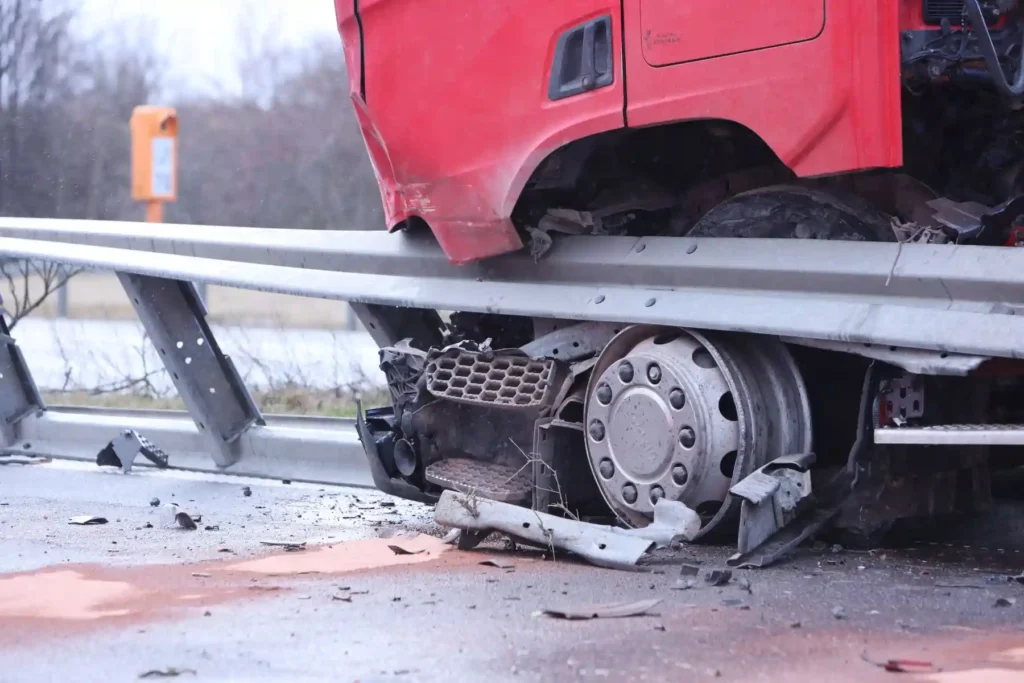Have you ever seen pieces of torn truck tires on the road, especially in summer? These are called road gators, and they often come from tire blowouts.
When the weather gets hot, truck tires expand, and if they are not in good shape, they can explode while driving. This is dangerous for truckers and for other vehicles on the road.
Truck tire blowouts happen more in hot weather because high temperatures make the rubber softer, increase air pressure inside the tire, and weaken the tire’s structure.
If a truck driver is going fast or carrying a heavy load, the risk becomes even higher. A blowout can cause a truck to lose control, leading to accidents, damage, or delays in deliveries.
But the good news is that truckers and fleet owners can prevent tire blowouts with proper maintenance and smart driving habits.
In this blog, we will explain why truck tires fail in hot weather, the dangers of blowouts, and how to avoid them with simple steps.
Whether you’re a truck driver, fleet manager, or business owner, this guide will help you keep your truck tires safe on the road.
Heat and truck tires don’t mix well. When temperatures rise, truck tires absorb heat from the road, causing the rubber to soften.
This weakens the tread, casing, and sidewalls, making them more likely to fail under pressure.
Another big problem is air expansion. As the air inside the tire heats up, it expands, increasing the internal pressure.
If the tire is already old, worn out, or damaged, this extra pressure can push it past its limit, leading to a blowout.
Studies show that at 200°F, rubber starts breaking down. When this happens, the tire loses its strength and flexibility, making it more likely to crack or separate.
This also reduces fuel efficiency, as the truck has to work harder to move forward due to the increased rolling resistance.
It’s not just the weather—the road itself plays a huge role in tire overheating. On a 90°F day, asphalt can get as hot as 150°F, making the tires even hotter as they roll over it.
Long-haul driving without taking cooling breaks adds to the problem. The longer a truck runs, the more heat builds up in the tires, increasing the chance of tread separation or sidewall failure.
Another overlooked factor is direct sunlight. Parking a truck in the sun for hours before a trip can preheat the tires, making them weaker before even hitting the road.
Over time, UV exposure also dries out the rubber, causing cracks and faster deterioration.

Truck tire blowouts are more than just an inconvenience—they are serious safety hazards that can put lives at risk and lead to major financial losses.
Here’s why every trucker and fleet operator should take blowout prevention seriously.
A tire blowout can happen in seconds, but the damage it causes can last much longer.
Even if a blowout doesn’t cause an accident, it can still lead to major problems for truckers and fleet owners.
Blowouts are dangerous, costly, and avoidable with proper maintenance and tire safety practices.
Tire blowouts don’t just happen randomly—they are often caused by heat and stress that build up over time.
Understanding these factors can help truckers and fleet operators prevent dangerous and costly failures on the road.
One of the biggest reasons truck tires fail in hot weather is underinflation.
Solution: Check tire pressure before every trip, especially during hot weather.
While underinflation is a bigger problem, over inflation can also lead to blowouts.
Solution: Follow manufacturer-recommended PSI levels to keep tires at the right pressure.
Carrying too much weight or loading cargo unevenly puts extra stress on tires.
Solution: Stick to FMCSA weight regulations and ensure proper weight distribution before every trip.
The way a truck is driven also plays a role in tire overheating.
Solution: Drive at safe, steady speeds and avoid harsh braking or acceleration, especially in hot weather.
Tires are a truck’s first line of defense on the road. Keeping them properly inflated, balanced, and maintained can prevent dangerous blowouts.
Truckers and fleet managers can take proactive steps to prevent tire failures caused by extreme heat. Here’s how to keep commercial truck tires safe and durable in hot conditions.
Keeping tires properly inflated is the best way to prevent blowouts.
Solution: Invest in high-quality TPMS and perform regular pressure checks before hitting the road.
Extreme heat makes tires vulnerable, but a few cooling strategies can help:
Solution: Plan routes with rest stops and take breaks to prevent tires from overheating.
Not all truck tires handle heat the same way. Choosing the right type for hot conditions can reduce blowout risks.
Solution: Use premium heat-resistant tires in hot weather and avoid retreads when possible. Not all tires are built for extreme heat. Using heat-resistant tires from brands like Michelin, Goodyear, and Bridgestone can help reduce wear and blowout risks. If you’re unsure which tires to choose, check out our guide on How To Choose The Best Tires For Your Truck? for expert recommendations.
Routine tire maintenance is critical for truck safety.
Solution: Set up a routine tire inspection schedule to catch problems early.
Many fleets adjust tire care based on seasonal temperature changes.
Solution: Develop a seasonal maintenance plan to keep truck tires in peak condition year-round.
Heat is one of the biggest threats to commercial truck tires, but with the right strategies, truckers can avoid blowouts and keep their fleet safe.

Modern technology helps truckers and fleet managers reduce the risk of tire blowouts caused by heat and other factors. Here’s how advanced systems can enhance tire safety and fleet efficiency.
A Tire Pressure Monitoring System (TPMS) is one of the most effective tools for preventing heat-related tire failures.
Solution: Install TPMS on all fleet vehicles to catch tire issues early and avoid breakdowns.
Electronic Logging Devices (ELDs) and fleet management software help improve tire longevity by reducing excessive heat exposure.
Solution: Use ELDs and predictive maintenance software to prevent heat damage and extend tire life.
Extreme heat is a major cause of tire blowouts, but weather tracking systems help drivers plan safer routes.
Solution: Use weather monitoring apps and route planning software to avoid dangerous heat conditions.
Technology is transforming tire safety for truckers and fleet owners. By using TPMS, ELDs, and weather tracking systems, companies can reduce heat-related tire failures, lower maintenance costs, and improve road safety.
Data from the FMCSA (Federal Motor Carrier Safety Administration) and tire industry reports show a clear link between heat and tire failures.
Here are some real-world examples of how extreme heat impacts commercial truck tires and how technology helps prevent blowouts.
Lesson: Proper tire inflation and heat monitoring can significantly reduce blowout risks.
A Midwest trucking company with a fleet of 250+ trucks was experiencing frequent tire blowouts during summer. Each incident led to:
Solution: The company installed a Tire Pressure Monitoring System (TPMS) across its fleet. Many trucking companies have reduced breakdowns and towing costs by using traction devices like TruckClaws™ in emergencies. If you want to understand how traction devices work in different conditions, read What Are Traction Devices? to learn more.
Results:
Lesson: Investing in TPMS technology helps prevent costly tire failures and improves fleet efficiency.
In 2019, a large freight trucking company faced a major accident due to a tire blowout on a highway in Arizona.
Investigation Findings:
Lesson: Ignoring tire maintenance and heat risks can lead to dangerous and costly consequences.
Tire failures caused by heat are a serious issue, but they can be prevented with the right technology and maintenance practices.
By learning from real-world data and case studies, trucking companies can take steps to reduce blowouts, lower costs, and keep roads safer.
Truck tires are more likely to blow out in hot weather due to factors like heat expansion, underinflation, and increased friction. High temperatures weaken the rubber, making tires more prone to failure.
However, proper maintenance and monitoring can significantly reduce these risks.
By following a proactive approach, including regular tire inspections, using Tire Pressure Monitoring Systems (TPMS), and taking cooling breaks, truckers can improve safety, fuel efficiency, and overall vehicle performance.
Investing in heat-resistant tires and fleet safety tools also helps ensure a smoother and safer drive, even in extreme summer conditions.
By following these simple but effective steps, truckers and fleet managers can reduce blowout risks, prevent costly repairs, and ensure safe deliveries—even in the hottest conditions.
